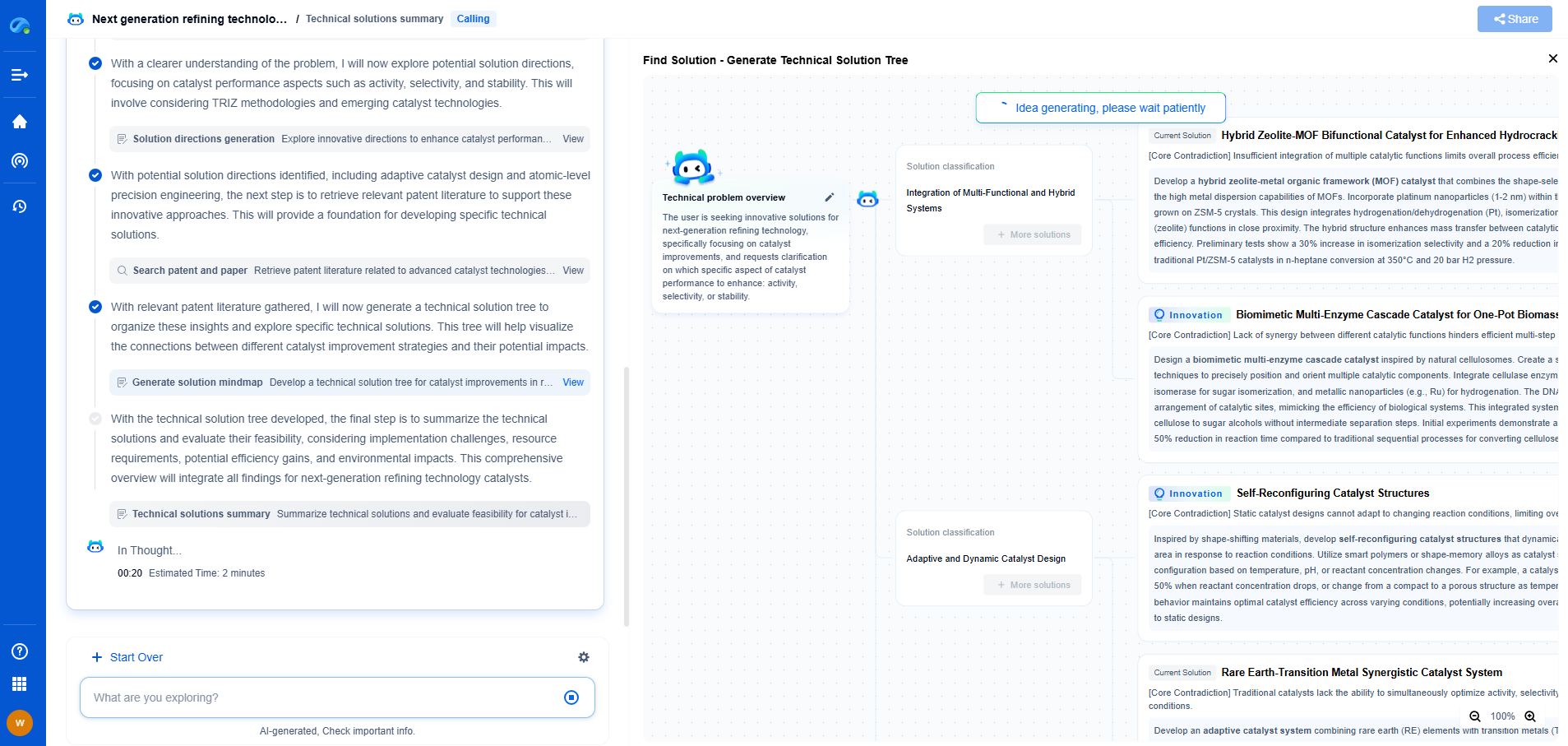How Frequency Affects Wireless Range and Penetration
JUN 27, 2025 |
Wireless communication has become an integral part of modern life, with countless devices relying on radio frequencies (RF) to connect and exchange information. However, not all frequencies are created equal. The choice of frequency significantly impacts the range and penetration capabilities of wireless signals, making it crucial to understand how these factors intertwine. In this article, we will explore the relationship between frequency, range, and penetration to provide a clearer picture of how wireless systems perform in various environments.
The Basics of Wireless Frequencies
Wireless frequencies refer to the part of the electromagnetic spectrum used for transmitting data between devices. Common frequency bands used in wireless communication include:
1. Low Frequency (LF) - 30 kHz to 300 kHz
2. Medium Frequency (MF) - 300 kHz to 3 MHz
3. High Frequency (HF) - 3 MHz to 30 MHz
4. Very High Frequency (VHF) - 30 MHz to 300 MHz
5. Ultra High Frequency (UHF) - 300 MHz to 3 GHz
6. Super High Frequency (SHF) - 3 GHz to 30 GHz
7. Extremely High Frequency (EHF) - 30 GHz to 300 GHz
Each of these frequency bands has unique characteristics that affect how signals propagate through different environments, which in turn influences their range and ability to penetrate obstacles.
Frequency and Range
In general, lower frequency signals tend to cover longer distances than higher frequency signals. This is because lower frequency waves have longer wavelengths, allowing them to travel further before the signal attenuates to unusable levels. For example, AM radio, which operates in the medium frequency band, can cover vast areas and even reach beyond the horizon due to its long wavelengths.
On the other hand, higher frequencies like those in the SHF and EHF bands experience more rapid attenuation and therefore have shorter range capabilities. These higher frequencies are often used for applications that require high data rates over relatively short distances, such as Wi-Fi and cellular networks in urban environments.
Frequency and Penetration
Frequency also plays a crucial role in determining how well a signal can penetrate obstacles such as walls, buildings, and foliage. Lower frequency signals are generally better at penetrating these barriers due to their longer wavelengths. This makes them ideal for applications such as marine and aviation communications, where signals must pass through various physical obstructions.
Conversely, higher frequency signals tend to reflect off surfaces more readily and are more easily absorbed by obstacles. This can significantly reduce their effectiveness in environments with many barriers. As a result, higher frequency systems often require line-of-sight or minimal obstructions for optimal performance.
Balancing Frequency, Range, and Penetration
Choosing the right frequency for a wireless communication system requires balancing the need for range, penetration, and data throughput. For instance, systems that prioritize long distances and strong penetration, such as emergency communication networks, often use lower frequency bands. These bands ensure reliable communication even in challenging environments.
In contrast, systems that prioritize high data rates and operate in more open environments, such as Wi-Fi networks in indoor settings, utilize higher frequencies like those in the 2.4 GHz and 5 GHz bands. These frequencies allow for greater data throughput at the expense of reduced range and penetration.
The Impact of Environmental Factors
It's important to note that environmental factors significantly impact the performance of wireless signals, regardless of the frequency used. Terrain, weather conditions, and interference from other devices can all affect signal strength and quality. For instance, rain can attenuate higher frequency signals more than lower frequency ones, making them less reliable in certain conditions.
Conclusion
A clear understanding of how frequency affects wireless range and penetration is vital for designing effective communication systems. By carefully selecting the appropriate frequency band based on the desired range, penetration ability, and data rate, engineers and designers can optimize wireless networks to meet the specific needs of their applications. As technology continues to evolve, striking this balance will remain essential to ensuring reliable and efficient wireless communication across diverse environments.
Unlock Next-Gen Innovation in Communication Technology with Patsnap Eureka
The field of communication technology is evolving at breakneck speed—from 5G and satellite systems to next-gen wireless protocols and quantum communications. Staying ahead demands more than just information—it requires strategic insights, real-time patent intelligence, and a deep understanding of technological trajectories.
Patsnap Eureka, our intelligent AI assistant built for R&D professionals in high-tech sectors, empowers you with real-time expert-level analysis, technology roadmap exploration, and strategic mapping of core patents—all within a seamless, user-friendly interface. Whether you're optimizing signal processing designs, navigating 3GPP standards, or exploring IP strategies for IoT and 6G networks, Eureka helps you move faster, think deeper, and innovate smarter.
Try Patsnap Eureka today—and see how it can transform the way you work across the entire communication technology innovation lifecycle.
- R&D
- Intellectual Property
- Life Sciences
- Materials
- Tech Scout
- Unparalleled Data Quality
- Higher Quality Content
- 60% Fewer Hallucinations
Browse by: Latest US Patents, China's latest patents, Technical Efficacy Thesaurus, Application Domain, Technology Topic, Popular Technical Reports.
© 2025 PatSnap. All rights reserved.Legal|Privacy policy|Modern Slavery Act Transparency Statement|Sitemap|About US| Contact US: help@patsnap.com

